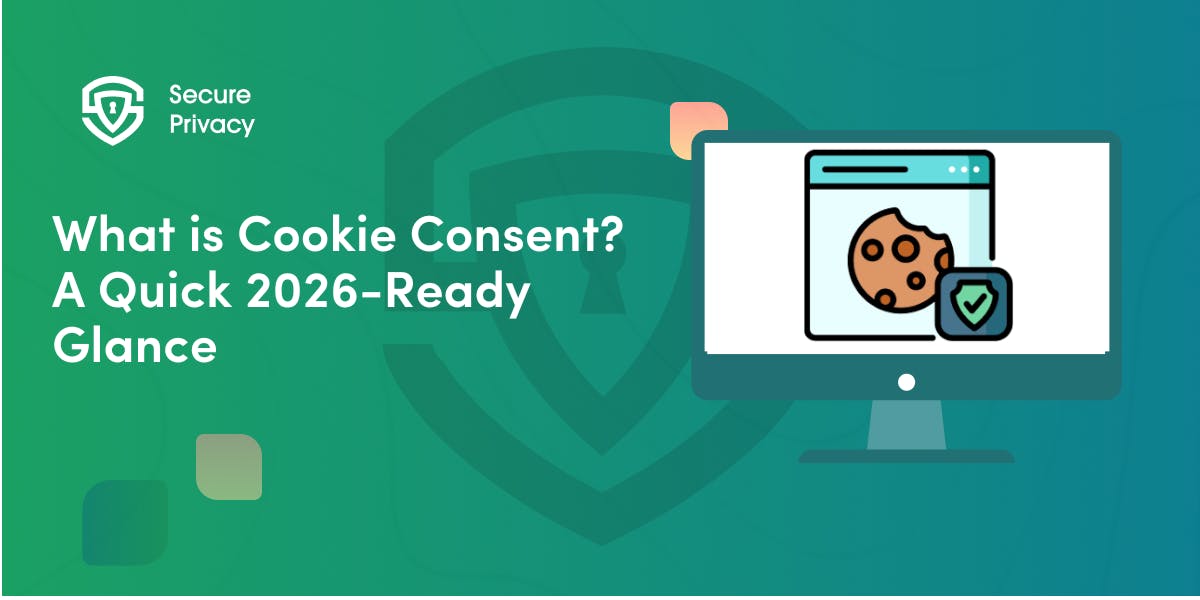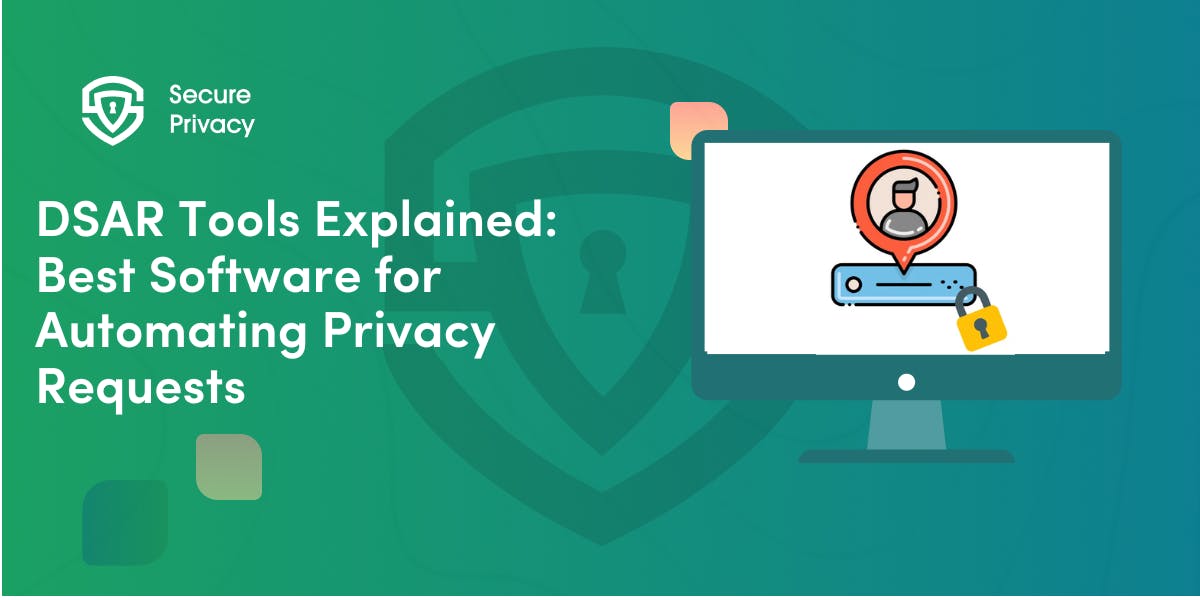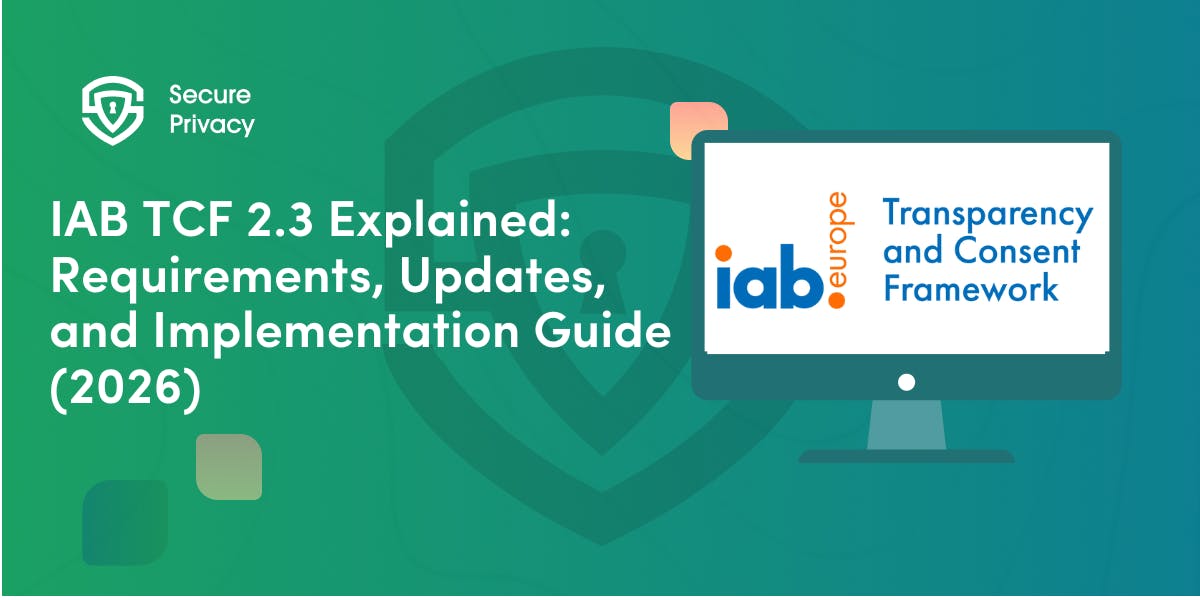IAB TCF Compliance Tool: Choose and Implement the Right Solution
Your Consent Management Platform just failed its IAB validation check. Three weeks before your planned launch, the CMP Validator flagged seventeen compliance issues across your consent banner implementation. Your legal team is escalating concerns about GDPR violations, your ad ops team worries about revenue impact, and nobody knows exactly what needs fixing or how long remediation will take.
An IAB TCF compliance tool validates that your consent management implementation adheres to the Transparency & Consent Framework specifications and policies. With 885 registered vendors and 177 certified CMPs participating in the TCF ecosystem, proper validation has become essential rather than optional. The Belgian Data Protection Authority's €250,000 fine against IAB Europe itself demonstrates that even framework operators face scrutiny, making rigorous compliance verification critical for all participants.
This comprehensive guide walks you through understanding IAB TCF compliance tools, evaluating different validation solutions, implementing effective testing workflows, and maintaining ongoing compliance as the framework evolves. Whether you're building a CMP, integrating consent management, or auditing existing implementations, you'll discover practical strategies for achieving and sustaining TCF compliance.

Prioritizing user privacy is essential. Secure Privacy's free Privacy by Design Checklist helps you integrate privacy considerations into your development and data management processes.
Understanding the IAB TCF Framework and Compliance Requirements
The IAB Transparency & Consent Framework represents the digital advertising industry's standardized approach to GDPR compliance. Created by IAB Europe in collaboration with IAB Tech Lab, TCF enables publishers, advertisers, technology vendors, and Consent Management Platforms to communicate user consent preferences across the advertising supply chain through standardized technical specifications.
The framework operates through several interconnected components. The Global Vendor List registers 885 technology vendors who commit to specific data processing purposes and legal bases. Consent Management Platforms generate Transparency & Consent Strings that encode user preference data in standardized formats. Technical specifications including JavaScript APIs enable TCF implementation across websites and applications.
TCF compliance extends beyond technical implementation to encompass policy adherence. Organizations must display specific UI elements providing transparency about data collection, obtain proper consent before processing personal data for advertising purposes, maintain easy consent withdrawal mechanisms, and accurately reflect user choices in consent strings.
Version 2.2, launched May 2023, introduced stricter requirements eliminating legitimate interest as the legal basis for personalized advertising purposes. Organizations must now obtain explicit consent for these processing activities, display vendor counts prominently on first-layer interfaces, and provide enhanced vendor disclosures including data categories and retention periods.
Version 2.3, scheduled for enforcement February 28, 2026, brings further enhancements including improved user choice transparency through standardized UI elements, enhanced publisher controls allowing override of vendor-declared legal bases, mandatory enforcement signals when consent isn't obtained, and greater integration with the Global Privacy Platform for cross-jurisdictional consent management.
The regulatory context surrounding TCF has intensified following the Belgian DPA's 2022 decision against IAB Europe. The authority classified the TC String as personal data and deemed IAB Europe a data controller, imposing a €250,000 fine that courts upheld in 2025. This precedent emphasizes that framework participation doesn't guarantee GDPR compliance—organizations must implement TCF correctly and maintain ongoing adherence.
What IAB TCF Compliance Tools Actually Do
An IAB TCF compliance tool encompasses the technologies, platforms, and services that enable organizations to validate, monitor, audit, and maintain adherence to TCF specifications and policies. These tools address multiple compliance dimensions spanning technical implementation correctness, policy adherence verification, ongoing drift detection, and regulatory documentation preparation.
Technical validation forms the foundation of compliance tools. These systems verify proper implementation of TCF JavaScript libraries and API interfaces, check correct generation and encoding of TC Strings according to specifications, confirm accurate reflection of user consent choices in consent string structure, and validate support for required event listeners.
Policy compliance verification ensures adherence to IAB Europe's TCF Policies beyond technical specifications. Tools assess whether consent banners display required transparency information, verify proper vendor registration and legal basis declarations, confirm implementation of easy consent withdrawal mechanisms, and validate that processing respects user consent choices.
The official IAB Europe CMP Validator represents the primary validation tool for TCF compliance. Released as a Chrome browser extension, this tool verifies TCF-registered CMP availability and correct behavior against the Controls Catalogue. The Validator performs automated technical checks detecting the __tcfapi presence on webpages, verifying CMP registration status, validating TC String format and encoding, and assessing consent string versioning.
Manual verification requirements complement automated checks. Validators must review first-layer UI transparency requirements, assess vendor disclosure completeness, verify consent withdrawal accessibility, and evaluate UI compliance with standardized requirements. CMPs must use the Validator to test software compliance during registration to receive a CMP ID.
Continuous compliance monitoring addresses the reality that implementations drift from compliant states over time. Advanced tools provide real-time alerting when CMP configurations change, automated detection of policy violations, response mechanisms for non-compliance reports, and enforcement procedures ensuring sustained adherence.
Core Features Every TCF Compliance Tool Should Provide
Comprehensive IAB TCF compliance tools integrate multiple capabilities addressing the complete validation lifecycle. Signal and TC String validation forms the technical foundation, with tools decoding consent strings to verify proper encoding of user preferences, validating version compatibility with current TCF specifications, checking vendor list integrity against the Global Vendor List, and confirming legal basis declarations match registered vendor purposes.
UI behavior verification ensures consent interfaces meet policy requirements. Tools assess whether banners display required first-layer transparency information, verify that vendor disclosures provide sufficient detail including data categories and retention periods, confirm easy access to consent withdrawal mechanisms, and validate that consent choices persist correctly across user sessions.
Vendor and GVL integrity checks validate that implementations reference current vendor information. Tools verify vendor IDs against the official Global Vendor List, confirm declared purposes align with vendor registrations, detect unauthorized vendors not registered in the framework, and flag discrepancies between vendor claims and actual processing activities.
Multi-domain and multi-site support addresses complex digital properties. Advanced tools validate consent propagation across subdomains, verify cross-domain consent sharing mechanisms, test consent persistence in multi-site environments, and confirm proper isolation between unrelated properties.
Drift detection and continuous monitoring capabilities identify when implementations deviate from compliant states. Tools track configuration changes detecting unauthorized modifications, monitor vendor list updates requiring interface adjustments, alert stakeholders when technical implementations change, and provide automated regression testing.
Reporting and compliance evidence generation supports regulatory documentation requirements. Tools produce comprehensive validation reports documenting compliance status, maintain audit trails recording validation activities and remediation actions, generate compliance certificates suitable for regulatory submissions, and provide dashboards visualizing compliance metrics.
Implementing an Effective TCF Validation Workflow
Successful TCF compliance requires systematic validation workflows beginning before deployment and continuing throughout the implementation lifecycle. Pre-validation setup establishes the foundation by aligning CMP configuration with business requirements and TCF policies, declaring appropriate vendor partnerships and legal bases, designing consent interfaces meeting transparency requirements, and establishing baseline compliance expectations.
The initial validation phase employs the CMP Validator and supplementary tools to verify implementation correctness. Organizations install the Chrome extension on test environments, execute automated checks verifying __tcfapi availability and TC String generation, complete manual verification steps assessing UI compliance and vendor disclosures, and document all identified issues with specific remediation requirements.
Interpreting validation results requires understanding the distinction between technical failures and policy violations. Technical failures indicate implementation errors preventing proper TCF functionality—missing API interfaces, malformed consent strings, incorrect vendor ID references, or broken consent withdrawal mechanisms. Policy violations reflect design choices conflicting with TCF requirements even when technical implementation functions correctly.
The fix-iterate-retest cycle addresses identified issues systematically. Development teams prioritize critical failures blocking CMP registration or creating immediate GDPR violations, implement technical corrections addressing API issues and consent string generation, redesign consent interfaces resolving policy compliance gaps, and re-run validation confirming remediation effectiveness.
Production monitoring extends validation beyond initial implementation to detect configuration drift and maintain ongoing compliance. Organizations schedule regular validation checks using automated tools, implement monitoring systems alerting on configuration changes, conduct periodic manual reviews assessing interface compliance, and establish incident response procedures addressing non-compliance reports.
Regression testing prevents compliance degradation through system changes. Teams integrate validation into continuous integration pipelines, establish pre-deployment validation requirements blocking releases failing compliance checks, maintain version-controlled consent configurations enabling rollback of problematic changes, and document validation history demonstrating sustained compliance.
Evaluating and Comparing TCF Compliance Solutions
Selecting appropriate TCF compliance tools requires systematic evaluation across multiple dimensions. Coverage assessment examines which aspects of TCF compliance tools address—technical signal validation, UI and policy compliance checking, multi-domain support, cross-platform capabilities spanning web, mobile, and CTV environments, and continuous monitoring versus point-in-time validation.
Ease of use significantly impacts validation effectiveness. Organizations should evaluate whether tools require specialized technical expertise or enable use by compliance professionals, assess setup complexity and integration requirements, examine reporting clarity and actionability of identified issues, and consider whether interfaces support different stakeholder roles.
Integration capabilities determine how tools fit within existing technology stacks. Evaluation criteria include compatibility with major CMP platforms and tag management systems, API availability enabling automated validation workflows, webhook support providing real-time compliance notifications, and data export options facilitating custom reporting.
The official IAB Europe CMP Validator provides baseline validation capabilities at no cost. This Chrome extension offers automated technical checks verifying API presence and TC String format, manual verification workflows guiding policy compliance assessment, results export enabling documentation and remediation tracking, and official recognition supporting CMP registration processes.
Commercial CMP platforms like Secure Privacy integrate compliance validation within comprehensive consent management solutions. These platforms offer automated scanning identifying cookies and tracking technologies across multiple websites if needed, built-in validation checking TCF compliance automatically, consent rate optimization testing different interface designs, and enterprise-grade support including legal guidance.
Specialized monitoring services like our privacy governance platform provide continuous compliance surveillance. These solutions continuously monitor consent banner operation and correct installation, automatically notify clients of compliance issues or incorrect settings, track configuration changes affecting compliance status, and generate regular compliance reports.
Addressing Edge Cases and Complex Implementation Scenarios
Standard TCF validation tools address common implementation patterns, but real-world deployments often involve edge cases requiring specialized approaches. Private CMPs serving specific publishers face unique challenges. These implementations must still pass validation and receive CMP IDs, but may lack resources commercial vendors invest in compliance infrastructure.
Custom technology stacks integrating TCF without standard CMP platforms require careful validation. Organizations building bespoke consent solutions must implement TCF JavaScript APIs correctly from specifications, generate properly formatted TC Strings encoding user preferences accurately, maintain compatibility with commercial CMPs for cross-site consent sharing, and undergo rigorous validation.
Complex domain setups spanning multiple websites, subdomains, and cross-domain scenarios create validation challenges. Tools must verify consent propagation across subdomain boundaries, test cross-domain consent sharing mechanisms, validate domain isolation when different properties require separate consent management, and confirm proper handling of third-party iframes and embedded content.
Migration toward TCF v2.3 demands proactive validation of readiness. Organizations should audit current implementations against v2.3 requirements before February 2026 deadline, test enhanced publisher controls overriding vendor-declared legal bases, validate mandatory enforcement signals when consent isn't obtained, confirm standardized UI elements meet new transparency requirements, and establish migration timelines.
Maintaining Compliance as TCF Continues Evolving
The Transparency & Consent Framework operates as a living specification that evolves responding to regulatory guidance, technological advances, and industry feedback. TCF v2.3 represents the next major iteration bringing improved user choice transparency, standardized consent text templates, enhanced publisher controls over vendor processing, mandatory enforcement signals requiring processing cessation without consent, and greater integration with Global Privacy Platform.
Organizations must prepare for v2.3 compliance before the February 28, 2026 enforcement deadline. Preparation includes conducting comprehensive audits identifying gaps requiring remediation, updating consent interfaces incorporating standardized UI elements and enhanced transparency, implementing publisher controls enabling override of vendor-declared legal bases, testing enforcement signals confirming processing stops when consent isn't obtained, and validating GPP integration if operating across jurisdictions.
Tool readiness determines whether compliance platforms support evolving TCF requirements. Organizations should verify that validation tools recognize v2.3 TC String formats, confirm CMP platforms implement required v2.3 capabilities, assess whether monitoring systems flag v2.3 compliance issues appropriately, and establish vendor relationships ensuring timely updates as specifications evolve.
AI and automation represent emerging trends in TCF validation. Advanced platforms employ machine learning for anomaly detection identifying unusual consent patterns suggesting implementation issues, predictive analytics forecasting compliance risks before violations occur, automated remediation suggesting or implementing fixes for common issues, and intelligent monitoring adapting validation criteria as framework requirements change.
Taking Action on TCF Compliance Validation
Implementing effective IAB TCF compliance validation requires immediate action addressing critical requirements. Organizations should begin by conducting comprehensive gap analysis evaluating current implementations against TCF v2.2 requirements and v2.3 upcoming changes. Run the official CMP Validator on all properties using TCF consent management, documenting identified issues with specific remediation requirements.
Medium-term strategic actions build sustainable compliance infrastructure. Implement continuous monitoring detecting configuration drift and unauthorized changes affecting compliance status. Establish cross-functional governance ensuring clear ownership and accountability for TCF compliance across technical, legal, and business teams. Develop vendor management processes requiring TCF registration and adherence from all technology partners.
Long-term organizational excellence requires viewing validation as component of comprehensive privacy strategy rather than isolated compliance activity. Integrate TCF validation with broader consent management optimization, first-party data initiatives, and privacy-preserving technology adoption. Monitor regulatory evolution anticipating future requirements and positioning implementations for adaptability.
Technology selection should prioritize tools matching organizational capabilities and requirements. Small publishers with straightforward implementations may rely primarily on the free CMP Validator supplemented by periodic manual reviews. Mid-market organizations benefit from commercial CMP platforms offering integrated validation, optimization, and monitoring. Enterprises with complex, multi-regional operations require comprehensive compliance platforms.
Remember thatIAB TCF compliance tools serve the fundamental objective of respecting user privacy choices while enabling sustainable digital advertising. Technical validation and policy adherence create the foundation, but genuine commitment to transparency and user empowerment differentiates organizations that view compliance as an obligation from those recognizing privacy as a competitive advantage. Effective validation programs demonstrate to users, regulators, and business partners that consent management operates correctly and organizations take privacy responsibilities seriously.
Get Started For Free with the
#1 Cookie Consent Platform.
No credit card required

What is Cookie Consent? A Quick 2026-Ready Glance
Your website loads. Cookies track users. But without proper cookie consent, you're violating GDPR — risking fines up to €20 million or 4% of global revenue. Cookie consent is the legally required mechanism by which websites obtain explicit user approval before deploying non-essential tracking technologies. This requirement stems from GDPR Article 4(11) and the ePrivacy Directive, mandating that consent must be freely given, specific, informed, and unambiguous.
- Legal & News

DSAR Tools Explained: Best Software for Automating Privacy Requests
You're drowning in data subject access requests. Manual searches through dozens of systems miss regulatory deadlines and expose organizations to fines starting at $2,500 per violation. The solution? DSAR tools — purpose-built software that automates the entire process of responding to data subject access requests, from intake to delivery.
- Legal & News

IAB TCF 2.3 Explained: Requirements, Updates, and Implementation Guide (2026)
Your ad revenue dropped 40% overnight. Google stopped bidding on your inventory. Your DSP partners flagged your traffic as non-compliant. The culprit? An outdated TCF 2.2 consent string after the February 2026 enforcement deadline.
- Legal & News
- Cookie Consent
